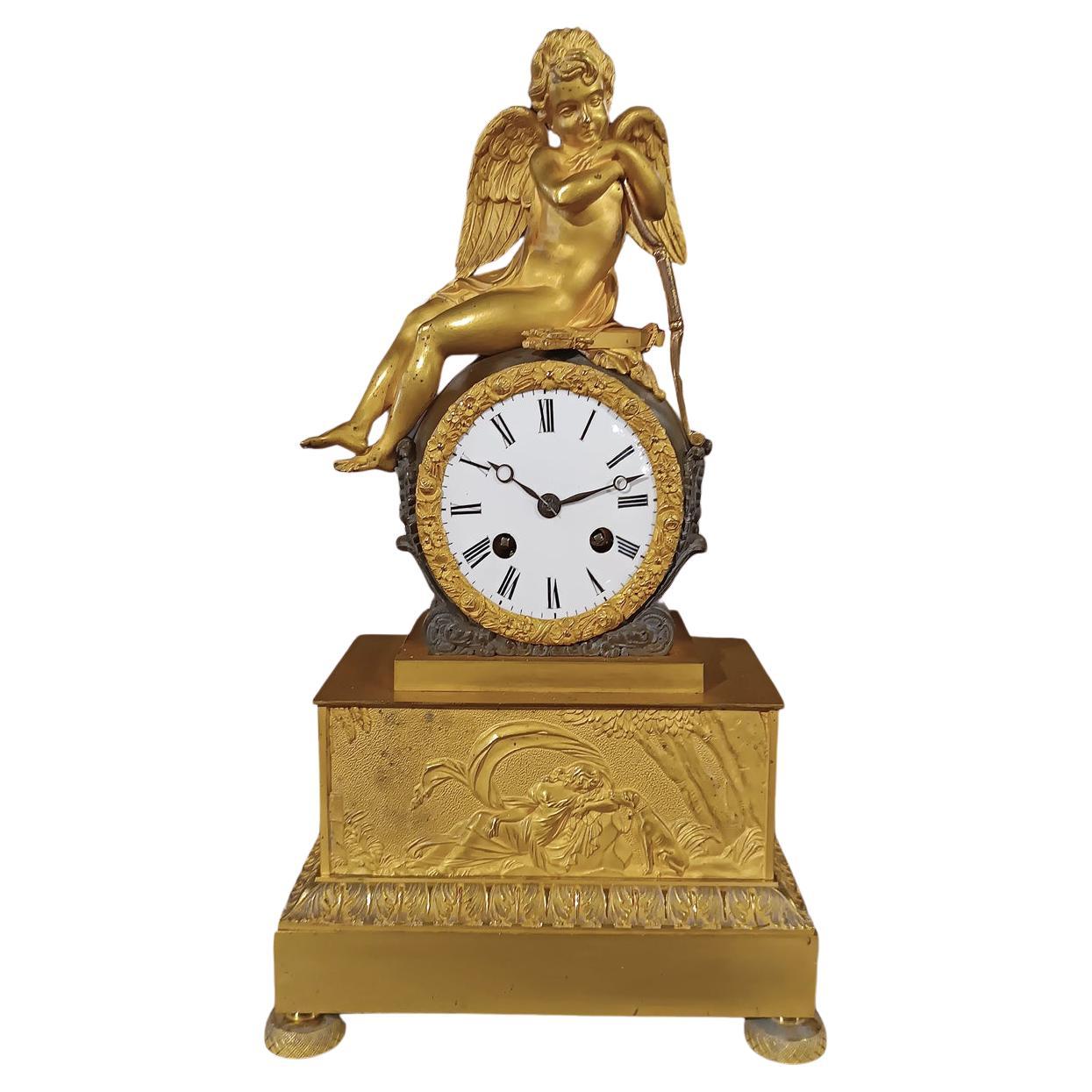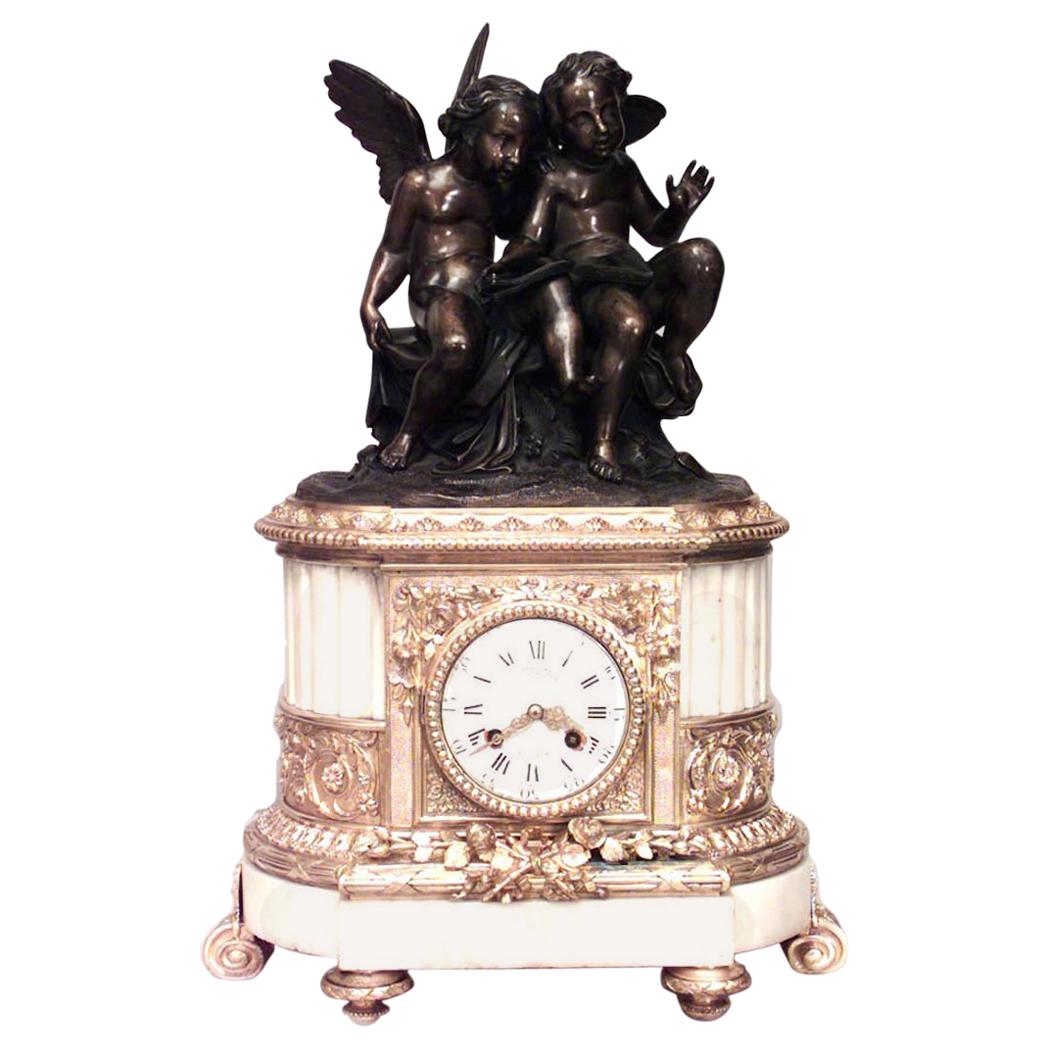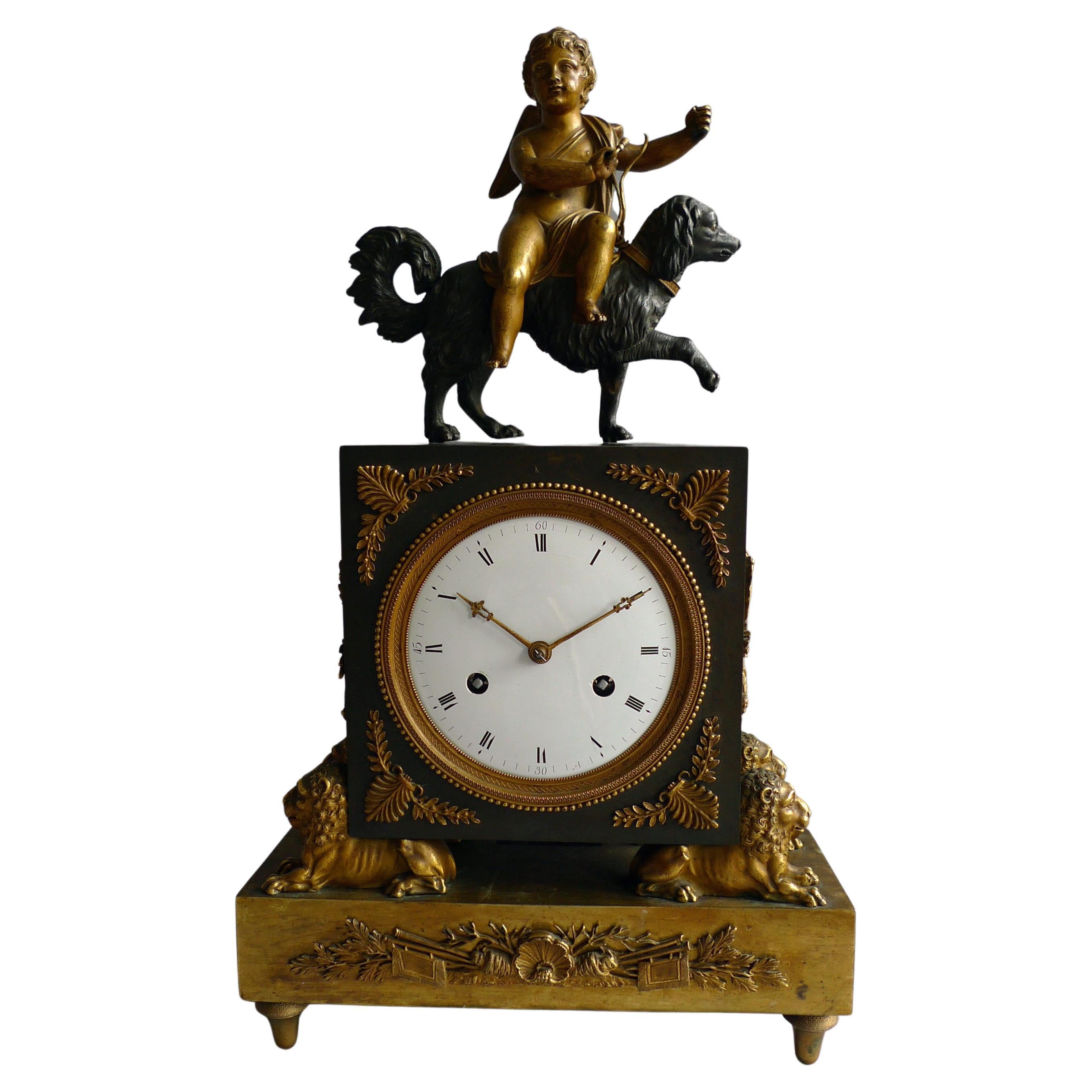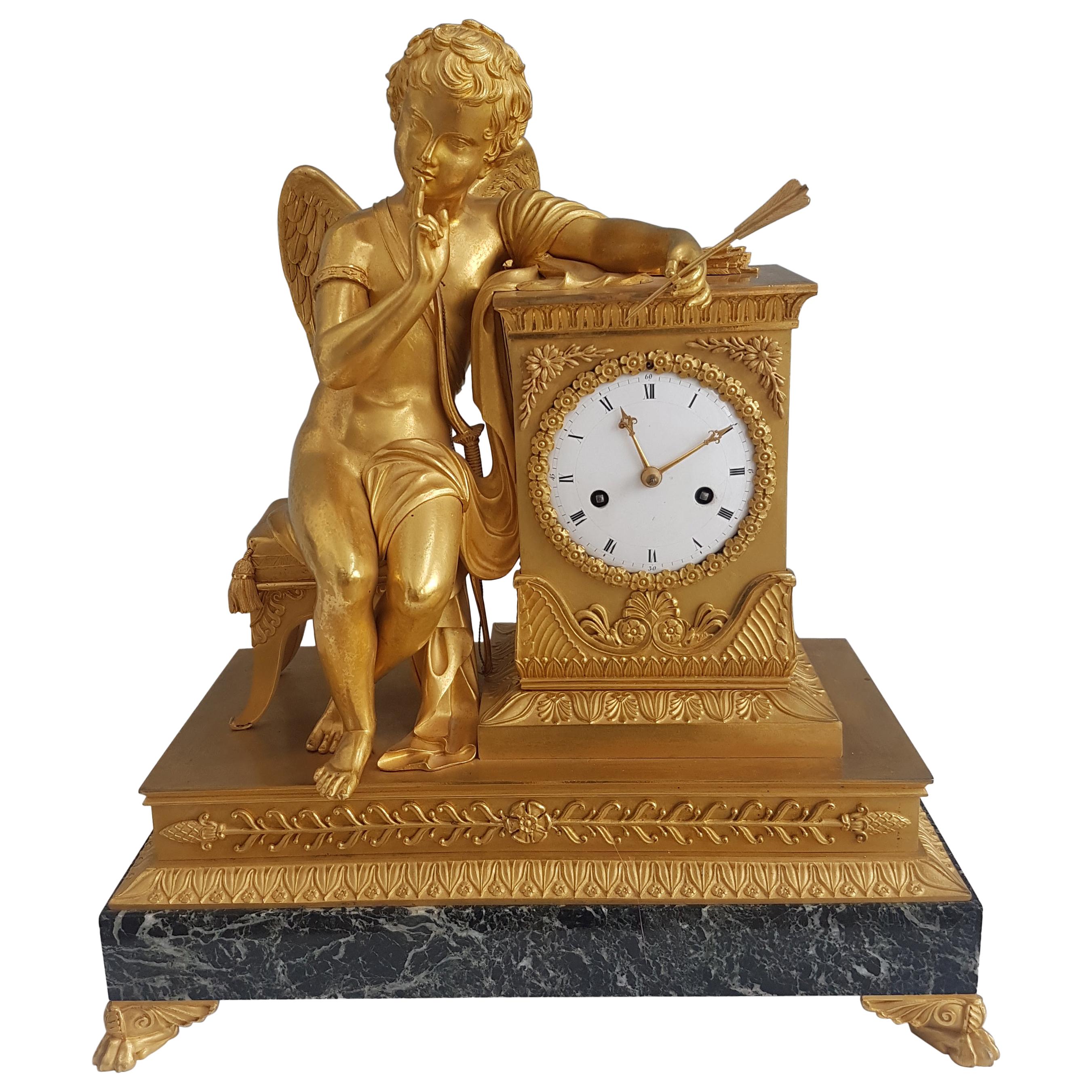Items Similar to Clock with Cupids by D'Aureville, Chameroy and Maison Barbot, France, c. 1860
Want more images or videos?
Request additional images or videos from the seller
1 of 8
Clock with Cupids by D'Aureville, Chameroy and Maison Barbot, France, c. 1860
About the Item
Signed D’Aureville et Chameroy, Maison Barbot
A very fine Greek style clock made in gilded bronze, standing on four claw feet. Topped with two cherubs reading a floor plan.
The Barbot company, installed Chapon street in Paris between 1840 and 1850, then Rambuteau street in 1860, Saint-Maur street in 1890, finally Bucy street, circa 1900, specialized in the making of clocks made in inlaid wood or bronze. They went in partnership with D’Aureville et Chameroy who supplied the clockworks.
- Creator:D’aureville & Chameroy, Maison Barbot (Clockmaker)
- Dimensions:Height: 10.63 in (27 cm)Width: 8.27 in (21 cm)Depth: 5.52 in (14 cm)
- Style:Greek Revival (In the Style Of)
- Materials and Techniques:
- Place of Origin:
- Period:
- Date of Manufacture:Circa 1860
- Condition:Wear consistent with age and use.
- Seller Location:PARIS, FR
- Reference Number:
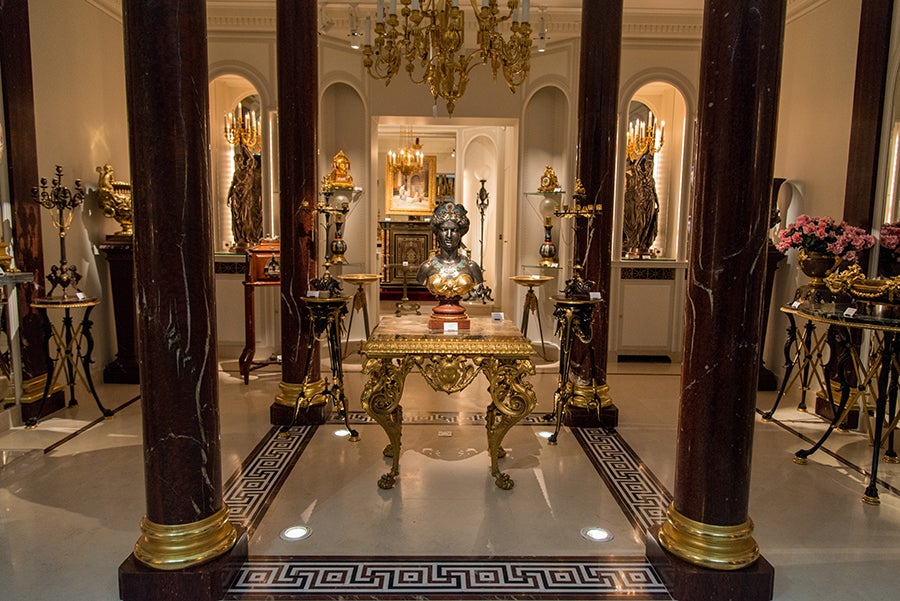
About the Seller
4.9
Vetted Seller
These experienced sellers undergo a comprehensive evaluation by our team of in-house experts.
Established in 1997
1stDibs seller since 2018
73 sales on 1stDibs
Typical response time: <1 hour
Associations
International Confederation of Art and Antique Dealers' Associations
- ShippingRetrieving quote...Ships From: PARIS, France
- Return PolicyA return for this item may be initiated within 7 days of delivery.
More From This SellerView All
- Fine Neo-Greek Clock Set by H. Houdebine, France, Circa 1867By Henri HoudebineLocated in PARIS, FRDial signed H. Houdebine, Fabricant de Bronzes, Rue de Turenne 64, Paris and clockwork signed Japy Frères & Cie – Médaille d’Honneur A very fine neo-Greek style clock set made up of...Category
Antique 1860s French Greek Revival Table Clocks and Desk Clocks
MaterialsBronze
- Important Five Pieces Marble and Gilded Bronze Clock Set, France, Circa 1860By Henri PicardLocated in PARIS, FRMarked on the dial Furet & Bon, Hrs du Roy, à Paris Measures: Clock – Height 98 cm (38 1/2 in.), width 70 cm (27 1/2 in.), depth 25 cm (9 3/4 in.) Candelabra – Height 116 cm (45 ...Category
Antique 1860s French Louis XVI Mantel Clocks
MaterialsMarble, Bronze
- Neo-Egyptian Bronze and Marble Clock Attributed to G.Servant, France, Circa 1870By Georges Emile Henri ServantLocated in PARIS, FRA black and red marble clock in the shape of an Egyptian temple attributed to G. Servant, flanked by double columns inscribed with hieroglyphs and ornated with a winged uraeus, all made in two patina bronze. The clock is surmounted by a patinated bronze sphinx. Resting on four bronze faces wearing the nemes and terminating in lion paw feet. Georges Emile Henri Servant (circa 1828-1890) who took over his father in 1855 at their foundry, rue Vieille-du-Temple, in Paris, specialized in the production of neo-Egyptian style clocks, very popular in France since 1860s, and also the making of Greek style decorative objects. He drew considerable attention to the high quality of his bronzes at the 1855 Paris Universal Exhibition and then at the 1862 London Exhibition. At this time Servant exported up to 40% of his production, principally to the United States, where for instance, his sphinx clocks were sold with great success by Louis Tiffany Inc. or Hamann & Roche of New York (A similar clock is now exposed at the Metropolitan Museum of Art, New York). But his success came really at the 1867 Paris Universal Exhibition, where he was awarded a gold medal for his neo-Greek and Egyptian works (Les Merveilles...Category
Antique 1870s French Egyptian Revival Mantel Clocks
MaterialsMarble, Bronze
- Leila and the Giaour Gilded Bronze Clock, France, Circa 1830Located in PARIS, FRDial signed Polti Frères Measures: With base or glass: Height 61 cm (24 in.), width 51,5 cm (20.3 in.), depth 23.5 cm (9,2 in.) Without base: Height 52 cm (20,5 in.), width 42 cm (16.5 in.), depth 12.5 cm (4.9 in.) Important philhellenic clock in burnished and amati gilded bronze, finely chiseled, representing on the terrace a couple elegantly dressed in "the turkish style", and richly decorated with foliage, scrolls and flowers. The feet, decorated with water leaves, rest on an oval wooden base covered with a globe. The theme of the clock comes from The Giaour, a fragment of a Turkish Tale, an English poem by Lord Byron published in may 1813 which tells the thwarted love of a Venetian, the Giaour – term by which the Turks designate infidels and especially Christians – and of Leila, a slave belonging to Hassan’s seraglio, military leader of a Turkish province. The betrayal of Leila discovered, she will be thrown into the sea and her lover will avenge her by killing Hassan, then taking refuge in a monastery. Symbol of prestige and modernity, the decorative clocks are a reflection of the taste of the era of a wealthy bourgeoisie and may be the subject of diplomatic gifts or between individuals. Beyond the purely decorative aspect of such objects, watchmaking in the 19th century is part of a subtle mix of political, historical and literary references. This philhellenic movement converning the West finds a particular echo in France, one of the countries with the United Kingdom and Russia having suported the Greeks during their war of independance (1821-1830) to free oneself from the grip of the Ottoman Empire. Many clocks...Category
Antique 1830s French Mantel Clocks
MaterialsBronze
- Aesthetic Movement Carriage Clock, France, 19th CenturyLocated in PARIS, FRFine aesthetic movement clock in cloisonné enamel and gilded bronze, decorated with polychromed birds and flowers, and geometric gilded ornaments on a ...Category
Antique Late 19th Century French Aesthetic Movement Table Clocks and Des...
MaterialsBronze, Enamel
- Lovely Ormolu Clock "à la balançoire", France, Circa 1820Located in PARIS, FRFloral and decorated neoclassical ormolu clock, figuring two baluster columns joined together by a floral arch, and topped by a crown of rose...Category
Antique 1820s French Restauration Mantel Clocks
MaterialsOrmolu
You May Also Like
- French Empire Gilt Bronze Mantel Clock with Venus and CupidLocated in London, GBFrench Empire gilt bronze mantel clock with Venus and Cupid French, early 19th Century Measures: Height 53cm, width 37.5cm, depth 13.5cm This fine Empire period mantel clock is crafted from gilt bronze. The clock includes a sculptural surmount of Venus accompanied by Cupid. Venus sits atop the square clock...Category
Antique Early 19th Century French Empire Mantel Clocks
MaterialsBronze, Ormolu
- 18th CENTURY NEOCLASSICAL CLOCK WITH CUPIDLocated in Firenze, FIBeautiful and refined table clock in mercury-gilt bronze, with original gilding. The decoration presents the allegory of love, with Cupid sitting and leaning on the arch, while on th...Category
Antique Late 18th Century French Neoclassical Revival Table Clocks and D...
MaterialsBronze
- French Louis XVI Cupid Mantel ClockLocated in New York, NYFrench Louis XVI-style (19th Century) bronze dore and white marble oval shaped mantel clock with 2 cupids reading book at top. (Not working)Category
Antique 19th Century French Louis XVI Mantel Clocks
MaterialsMarble, Bronze
- French Directoire or Empire Clock with Cupid Riding a DogLocated in London, GBMagnificent and very rare French Directoire or Empire clock in patinated bronze and the finest highly worked ormolu. Set upon toupee feet below a rectangular ormolu base with applied...Category
Antique 1790s French Mantel Clocks
MaterialsBronze, Ormolu
- French Tortoiseshell Boulle Clock. c.1860By Japy FrèresLocated in Norwich, GBFrench Tortoiseshell Boulle Clock c.1860 Waisted case veneered with red tortoiseshell with finely figured brass and ormolu mounts, surmounted w...Category
Antique 1860s French Mantel Clocks
MaterialsTortoise Shell
- French Empire Ormolu and Marble Mantel Clock of CupidLocated in London, GBFrench Empire Ormolu and marble vert mantel clock of Cupid whispering. Wonderful original fire gilded mercury ormolu. The quality of the casting and chasing is superb, from the indiv...Category
Antique 1810s French Empire Mantel Clocks
MaterialsMarble, Ormolu
Recently Viewed
View AllMore Ways To Browse
Hermes Glass Clock
Chinoise Clock
Kartell Light Air
Waterbury Clock Co
Solari Cifra 5
Tiffany Desktop Clock
Vintage Digital Flip Clock
Vintage Wehrle Clock
Vintage Omega Desk Clock
Hawkeye Clock
Hawkeye Timer
Kienzle Automatic
Patek Philippe Complicated Desk Clock
Patek Philippe Sun
Swiza Clock
Swiza Clocks Vintage
Takashi Kato
Goliath Clock

